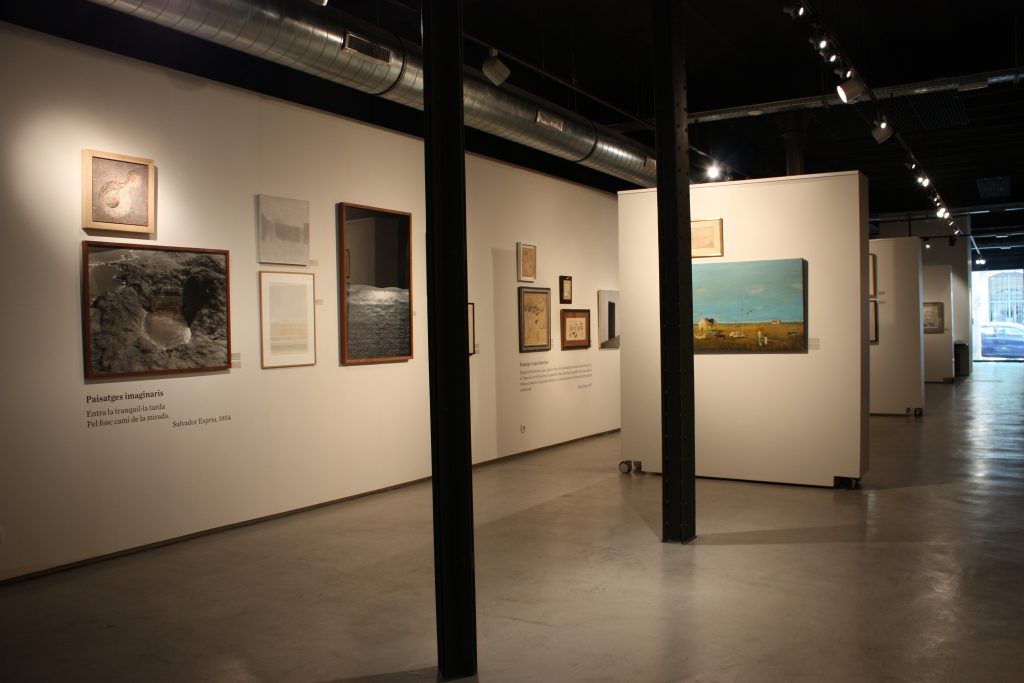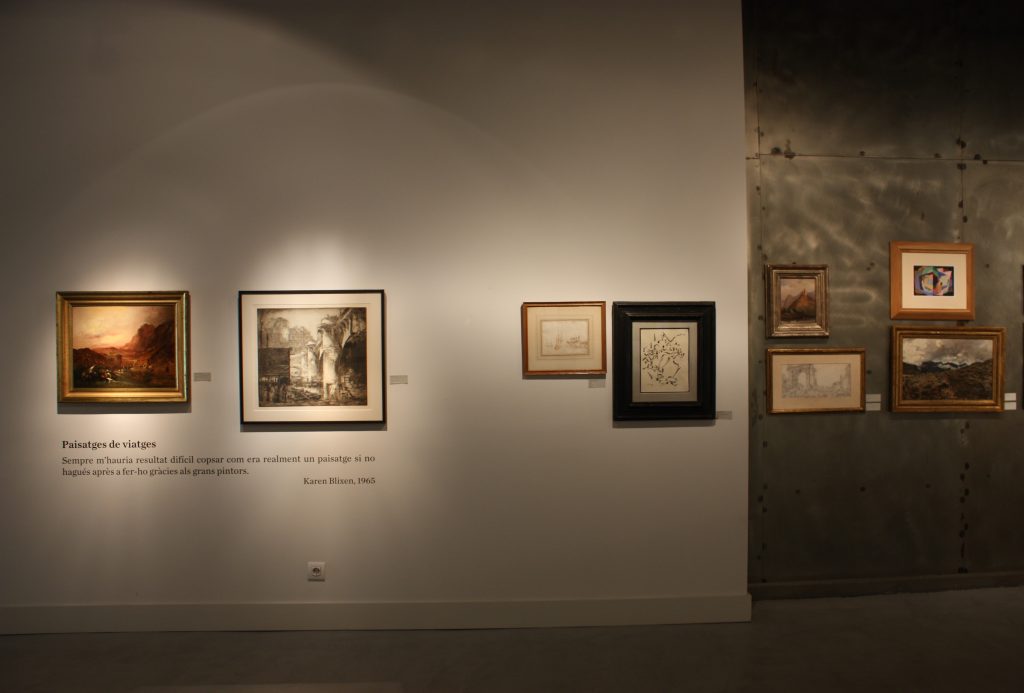With this exhibition we begin a trajectory of revision of pictorial genres from the contemporaneity. We continue in this way with the open line of establishing fruitful dialogues between historical and current art. The route of the exhibition has been structured in five looks at the landscape. We begin with the travel landscape, with the search for the unknown and exotic, but also with how we are surprised to perceive the everyday environment in a different way. The concepts of the feeling of immensity in front of a landscape, of the sublime, and the picturesque attention to the singular, are thus present. But every look is mediated by memory, which is why we include this blog, the landscapes of time and memory, which shows the landscape as a witness to the passage of time and as an evocative representation of history and the stories that the images suggest . In this sense, an inclusion of the concept of ruin cannot be missing.
The exhibition itinerary follows the imaginary landscape. Considering that almost all the landscape until the 19th century was an ideal reconstruction of notes and, most of the time, its source was the engravings that circulated about architectures and landscapes seen and imagined. In the current panorama this type of landscape is present above all in surrealist poetics, but also in others of a metaphysical nature and, in general, in all those that build a landscape from a combinatorial game or a personal invention. From the imaginary, an incursion is made into the interior landscape, understood not only as the great tradition of interior spaces, but as an incursion into the interior space of each artist’s process, in their singular poetics. Finally, our journey ends with the scenographic landscape, because deep down, every landscape is a staging, an order constructed by our perception of that constant flow that is presented to us in the becoming of nature. The fixation of the perspective point of view was the beginning of a whole great tradition of scenographic representations. We have made some brief notes, almost at random, of everything that can be discovered in this new exhibition that we are presenting. All we have to do is invite you to share this rich visual world, and see how the windows are not only open to the outside, but also to the interior of d’art.

The drawn city
2003

Labyrinth start
2004

The missing house

The missing house

Paisaje
c. 1918

Landscape
c. 1915

Audition at Gayarre theatre
1905 – 1910

Ronda, Andalusia
1923

River landscape with ruins

The spectators
c. 1903

Spatial act

Center window
1972

Construction. Mexico 14
1979

Little crater 15
2004

Tower of babel
Cotlliure, 1975

Untitled
1953

Green space
1977






Video of Albert Esteve’s presentation











